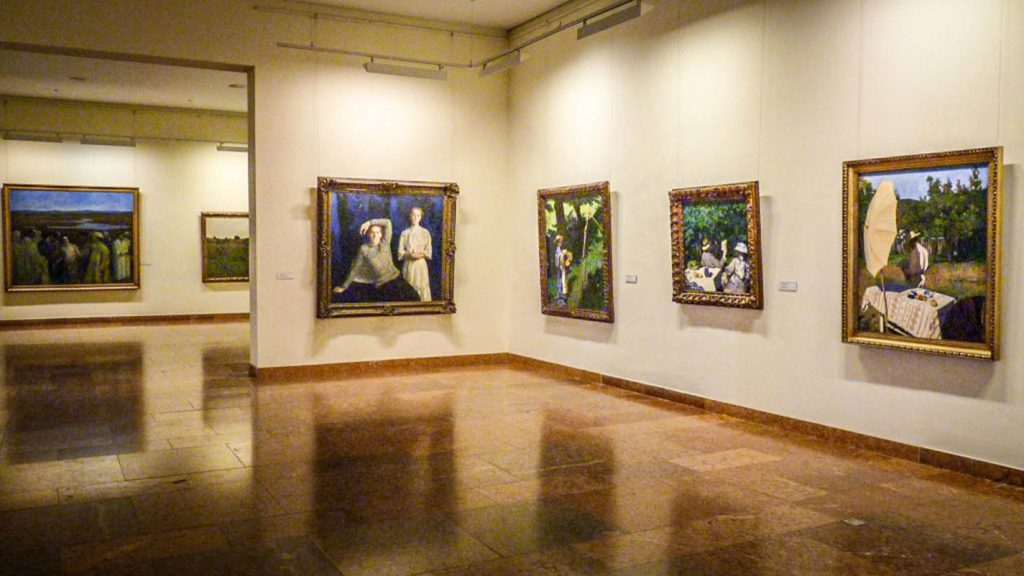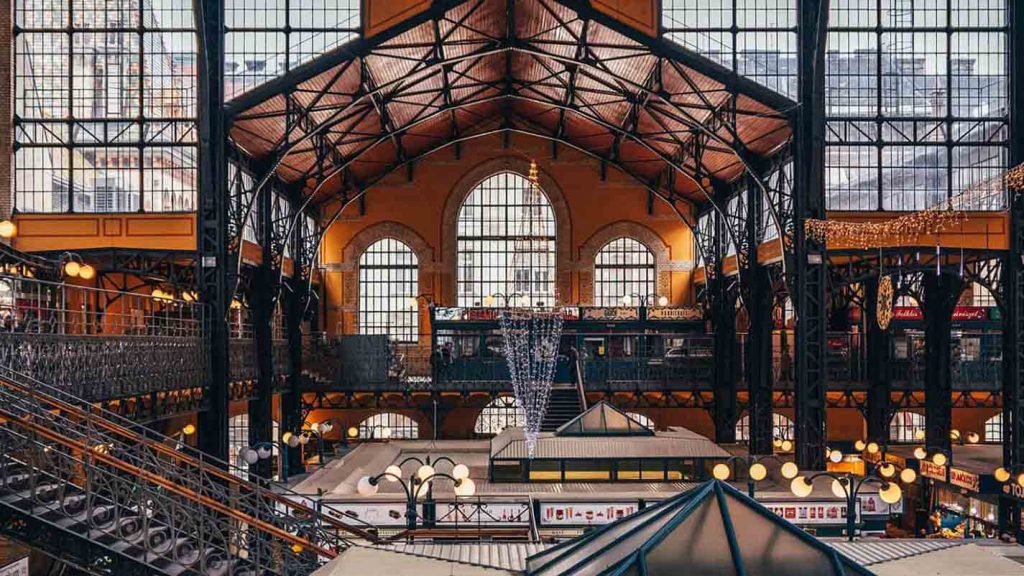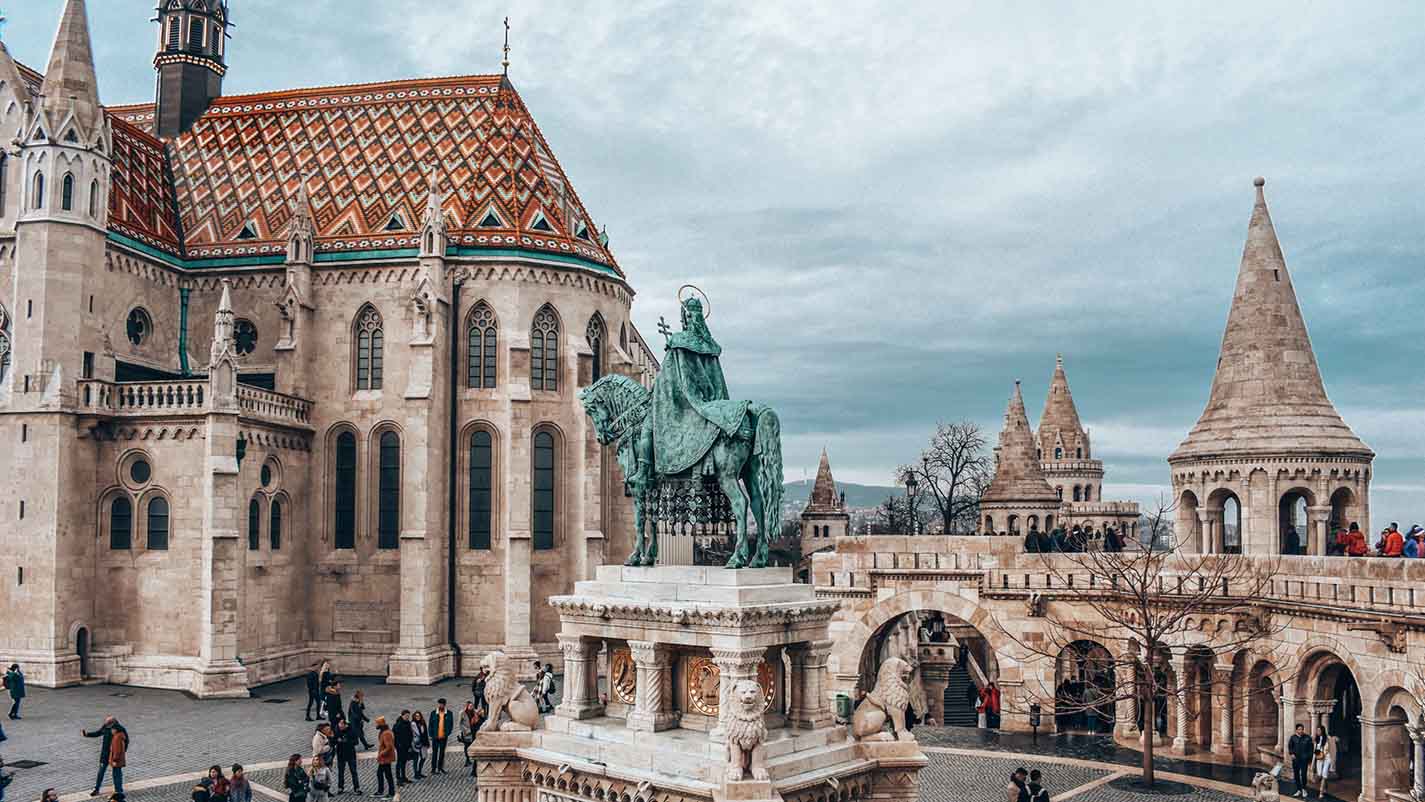When people speak of Europe’s great capitals, they often think of Paris, Rome, or Vienna. Yet nestled gracefully along the banks of the Danube lies a city that combines all the grandeur of history, the intimacy of local culture, and the richness of art and cuisine. Budapest, the Hungarian capital, is a city of dualities and harmonies—a place where centuries-old architecture stands beside vibrant cultural movements, where steaming bowls of goulash meet Michelin-starred plates, and where music and thermal waters weave together an unforgettable atmosphere.
In this article, we’ll take a deep dive into Budapest’s essence, exploring how its art, architecture, and food traditions reflect not just the Hungarian soul, but also Europe’s spirit.
Budapest has always been a canvas for creativity. Walk through the city, and you’ll find artistry not only in its galleries but on its streets, walls, and performance stages.
Galleries and Museums
For those eager to immerse themselves in fine art, the Hungarian National Gallery inside Buda Castle is a must. Its collection spans medieval altarpieces, Gothic art, Renaissance masterpieces, and bold works from the 19th and 20th centuries. It’s not just a museum—it’s a timeline of Hungary’s artistic evolution.

Another unmissable stop is the Museum of Fine Arts, located on Heroes’ Square. Housing works by European giants like El Greco, Goya, and Titian, it brings Budapest into the wider dialogue of European artistry. Modern art enthusiasts will appreciate the Ludwig Museum of Contemporary Art, showcasing avant-garde pieces and experimental installations from across Central Europe and beyond.
Street Art and Creative Districts
But Budapest’s creativity doesn’t end in museums. The Jewish Quarter, particularly around Kazinczy Street, is famous for its ruin bars—abandoned buildings transformed into cultural hubs where walls are covered in murals, graffiti, and quirky installations. These spaces aren’t just nightlife hotspots; they’re living galleries where Budapest’s underground art thrives.
Architectural Grandeur
Budapest is an architectural playground, shaped by empires, revolutions, and cultural exchanges. The city’s structures tell stories—of medieval monarchs, Austro-Hungarian aristocrats, and modern innovators.
Landmarks That Define the Skyline
- Parliament Building: Perhaps the most iconic of all, this neo-Gothic masterpiece on the Danube bank is stunning both day and night. Its spires and symmetrical façade rival any structure in Europe.
- Buda Castle: Once home to Hungarian kings, the castle dominates the skyline with its stately Baroque presence. Today, it serves as a cultural complex, housing museums and offering panoramic views.
- Fisherman’s Bastion: With its fairytale towers and terraces, this lookout point feels like stepping into a storybook. The views over Pest and the Parliament are unmatched.
Layers of History
Walk through different districts, and you’ll find diverse architectural styles. Andrássy Avenue is lined with neo-Renaissance mansions, while Váci Street blends historic facades with modern boutiques. The Great Synagogue, the largest in Europe, is a marvel of Moorish Revival architecture and a poignant reminder of Budapest’s Jewish heritage.
Even the city’s bridges are architectural statements. The Chain Bridge, the first permanent link between Buda and Pest, symbolizes unity and resilience, while the Liberty Bridge dazzles with its Art Nouveau details.
The Flavors of Budapest
Hungarian cuisine is deeply rooted in tradition, but Budapest elevates it into a culinary journey. Eating here is not just about filling the stomach—it’s about tasting history, culture, and innovation.
Traditional Delights
No visit is complete without trying goulash, a hearty beef soup flavored with paprika, the spice that defines Hungarian cooking. Pair it with fresh bread, and you have comfort in a bowl. Another staple is chicken paprikash, tender meat stewed in a paprika-rich sauce, usually served with dumpling-like nokedli.
For something sweet, kürtőskalács (chimney cake) is a street food favorite. Rolled dough grilled over charcoal, coated with sugar, and often dusted with cinnamon or nuts—it’s both a snack and a spectacle.
Modern Gastronomy
In recent years, Budapest has seen a renaissance in fine dining. Restaurants like Onyx and Costes have earned Michelin stars, blending Hungarian traditions with modern techniques. Farm-to-table movements and a younger generation of chefs are redefining the city’s food identity.
And let’s not forget the café culture. The New York Café, often dubbed the “most beautiful café in the world,” offers opulent surroundings with gilded ceilings and chandeliers. Yet smaller cafés and specialty coffee houses scattered throughout the city show Budapest’s evolving love for coffee culture.
The Danube Connection
The Danube River is the artery of Budapest. Beyond being a geographical divider of Buda and Pest, it’s a stage where the city shows its most photogenic self. River cruises allow visitors to see landmarks illuminated at night, while the embankments provide perfect promenades for both locals and travelers.
The Danube has inspired composers like Johann Strauss, whose “Blue Danube Waltz” immortalized its beauty. Standing on the banks at sunset, watching the Parliament glow in golden light, one realizes why the river is not just a waterway, but a muse.
Cultural Rhythms and Festivals
Budapest is alive with music, dance, and cultural celebrations. The city has a long-standing classical music tradition, with the Hungarian State Opera House offering world-class performances in a breathtaking venue. For a modern twist, ruin bars host live bands, DJs, and experimental performances almost every night.
Festivals are also central to Budapest’s charm. From food and wine festivals to international film and art events, there’s always something happening that draws both locals and global visitors into the city’s cultural embrace.
Wellness and Thermal Traditions
One cannot talk about Budapest without mentioning its baths. Known as the “City of Spas,” it offers an unparalleled thermal bathing culture. Széchenyi Thermal Bath, with its outdoor pools, is especially famous, attracting both locals and tourists who soak while snowflakes sometimes fall around them. Gellért Bath dazzles with Art Nouveau architecture, while Rudas Bath carries the legacy of Turkish influence.
Thermal baths in Budapest are not merely leisure; they are a lifestyle, a healing ritual, and a social tradition that stretches back centuries.
Exploring Beyond the Obvious
Budapest rewards curiosity. Beyond the big attractions, you’ll find hidden gems:
- Cave Church carved into Gellért Hill.
- The lesser-known Károlyi Garden, a tranquil oasis in the city center.
- Central Market Hall, where locals shop for produce, spices, and cured meats.

Each discovery, whether a quiet alley café or a small bookshop, adds another brushstroke to Budapest’s portrait.
Practical Tips for Travelers
- Getting Around: The city’s public transport system—trams, buses, and metro—is efficient and affordable. Tram line 2 is especially scenic, running along the Danube with views of major landmarks.
- Language: Hungarian is unique and challenging, but many people in hospitality speak English. Learning a few words, like köszönöm (thank you), can add warmth to your interactions.
- Currency: Hungary uses the forint (HUF). While card payments are widely accepted, cash is useful in smaller shops and markets.
- Safety: Budapest is generally safe, though like any major city, it’s wise to stay aware in crowded areas.
Why Budapest Captures the Heart
Budapest is more than the sum of its parts. Its art captures the imagination, its architecture narrates a thousand years of history, and its food comforts and delights. Yet to describe Budapest merely through these elements is to overlook the deeper spirit that connects them. The city thrives on contrasts: it is grand yet intimate, historic yet modern, relaxed yet dynamic. This paradox is what makes Budapest stand apart from many of Europe’s other celebrated capitals.
Art is not confined to galleries or opera houses; it spills onto the streets, into cafés, and through the melodies of buskers by the Danube. Architecture is not simply a backdrop but a living chronicle—bridges that tell stories of resilience, castles that echo with royal grandeur, and synagogues and churches that speak of cultural crossroads. Food is not just sustenance but an emotional anchor, whether it’s the comfort of a steaming bowl of goulash in a cozy tavern or the refined artistry of Michelin-starred plates that reinterpret Hungarian tradition with global flair.
The rhythm of daily life here adds another layer of fascination. Locals sipping coffee in Belle Époque cafés, friends gathering at ruin bars lit with fairy lights, or families relaxing in thermal baths all become part of the city’s ongoing cultural performance. Even a simple tram ride along the Danube feels like a journey through a living museum, where each stop reveals another chapter in the city’s story.
For travelers seeking a European destination that balances grandeur with authenticity, Budapest emerges as one of the continent’s finest. It offers the majesty of iconic landmarks while still leaving space for personal discovery in hidden courtyards, neighborhood markets, and quiet riverside walks. The city doesn’t overwhelm with spectacle alone—it invites you into its rhythm, allowing you to feel both the weight of history and the spark of youthful energy.
Whether you’re gazing across the Danube at sunset, savoring a spoonful of richly spiced goulash, or stepping into a thermal bath that has soothed generations, you’re not just visiting a city. You’re experiencing a living, breathing cultural masterpiece—one that leaves an imprint long after you’ve left its shores.
Tags: Andrássy Avenue, Cave Church, Liberty Bridge
